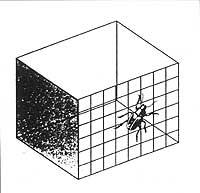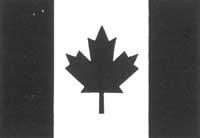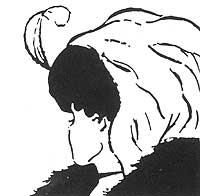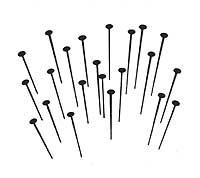Would you imagine?
For example, if what we want to represent is a geometric body, we will use the technique of perspective. If on the contrary the body is the face of a person, for example, the technique of shadows. Of course, both can be used simultaneously.

As for perspective, we can say that in addition to being a branch of Geometry, it is a very useful tool for artists. And it is that both scientists and artists have visited the XV. What they introduced in the nineteenth century is accepted, and scientists and artists wrote numerous books on perspective. Among the artists who used the technique of perspective are Filippo Brunelleschi, Piero della Francesca (author of the book De perspectiva pingendi, among others), Leon Battista Alberti (author of the book De pictura en este libro, which wrote a summary of all the discoveries of that time on Geometry applied to image and painting), we wrote in the Treatise on Horizontal Painting (Adenda).
Scientists: Scientists: The translator Federico Commandino (in 1558 published a work on perspective), Daniele Barbarbaro (author of the book The practice of perspective ... works very useful to painters, sculptors and architects), the architect Jacopo Barozzi (author of the book The two rules of practical perspective), author of the book Carribiolo, published in 1583. In it appears for the first time the following theorem: it is a set of straight and convergent perspectives of a beam of parallel lines. In this book the area of perspective reached the scientific level).

This space is understandable, the painters of that time (XIV. and XV. if we thought they were trying to study the scientific bases of their art (sixteenth century). One of the biggest problems that the artists presented was the representation of parallel lines, which were resolved with perspective.
But leaving history we return to our subject. Now yes, we can say that everything three-dimensional can be represented on a page. If we solve this problem, turn around and see what we can answer the following question: Do all two-dimensional images represent a three-dimensional being?
To present this answer, just look at the first three images.

In the first image it is covered with a paper, first the bottom (below the center) and then the top. If you do, you will discover how combining images of two three-dimensional things you can get an impossible image, which cannot be materialized in three dimensions. The author of this image is Roger Hayward and his title is an unspeakable monument. We cannot say that perspective plays an important role in this effect. However, in the upper part the perspective is used and in the lower part the shadow to represent the three dimensions.
In the second and third figure, perspective plays an important role, but not as expected, that is, to represent things that really exist, but to express impossible beings. Amazing! What was the invention of Christ, now becomes a rival and it seems that it will only produce headaches. However, we should not think so. The images do not lose their ornament. On the contrary, they gain beauty, charm, fascination and mysticism.

The second, though impossible, is different. In this image, optical representation is obtained through perspective. At first glance it seems that the image is real, that is, it can materialize in three dimensions. They are only cubes. But if you look well and follow the cube lines along different paths, you will realize that a cube of a vertex has to be at once at the height and under the cube of the other vertex. This tells us that it is impossible.
This type of impossible figures made them art. C. C. Escher. You can see another picture here again. They already appeared in numbers 3 and 5. In this third image you have a work entitled The relativity. Escher was born in the Dutch town of Leeawarden in 1898 and studied at the School of Architecture and Decorative Design in Harlem. His type of art has been called mathematical art. And it is that, as Escher himself has said: "Many times I find myself closer to mathematicians than to artists". His phrase is: "All my works are games. Serious games". And that is precisely what is seen in the third figure, the set of stairs.

Another type of images are those that hide two images. We bring you:
In the fourth we have a square prism and a beetle (idea to introduce the beetle L.S. Penrose and R. Penrose was father and son). Where do you see the beetle inside or outside the prism? To achieve both effects you must look at the prism (not the scarlet one) and approach an inner vertex (that is, suppose it is closer) or move away (that is, suppose it is farther) as you want. This effect is also the influence of perspective.

The fifth image corresponds to the Canadian flag, with the maple leaf in the central white part. But if you look at it very carefully you can also see two people talking. Try it.
In the sixth, the young old woman of Boring, known for her age. In this image many people see a fascinating young man and many others a foolishness. What do you see? The answer allows you to give different interpretations about your identity. But that is the work of others and not of us.

Another representation to finish. At the end of this page you have a nail in figure 7. Leave the magazine on the table, at the height of an edge. If you look up the nails down, you will see them lying on the page. Now flex slightly and place one eye (close the other) at the point where the nails are pointed and look at the nails flush. In this position you will seem that the nails are nailed in the blade. Is it not?





